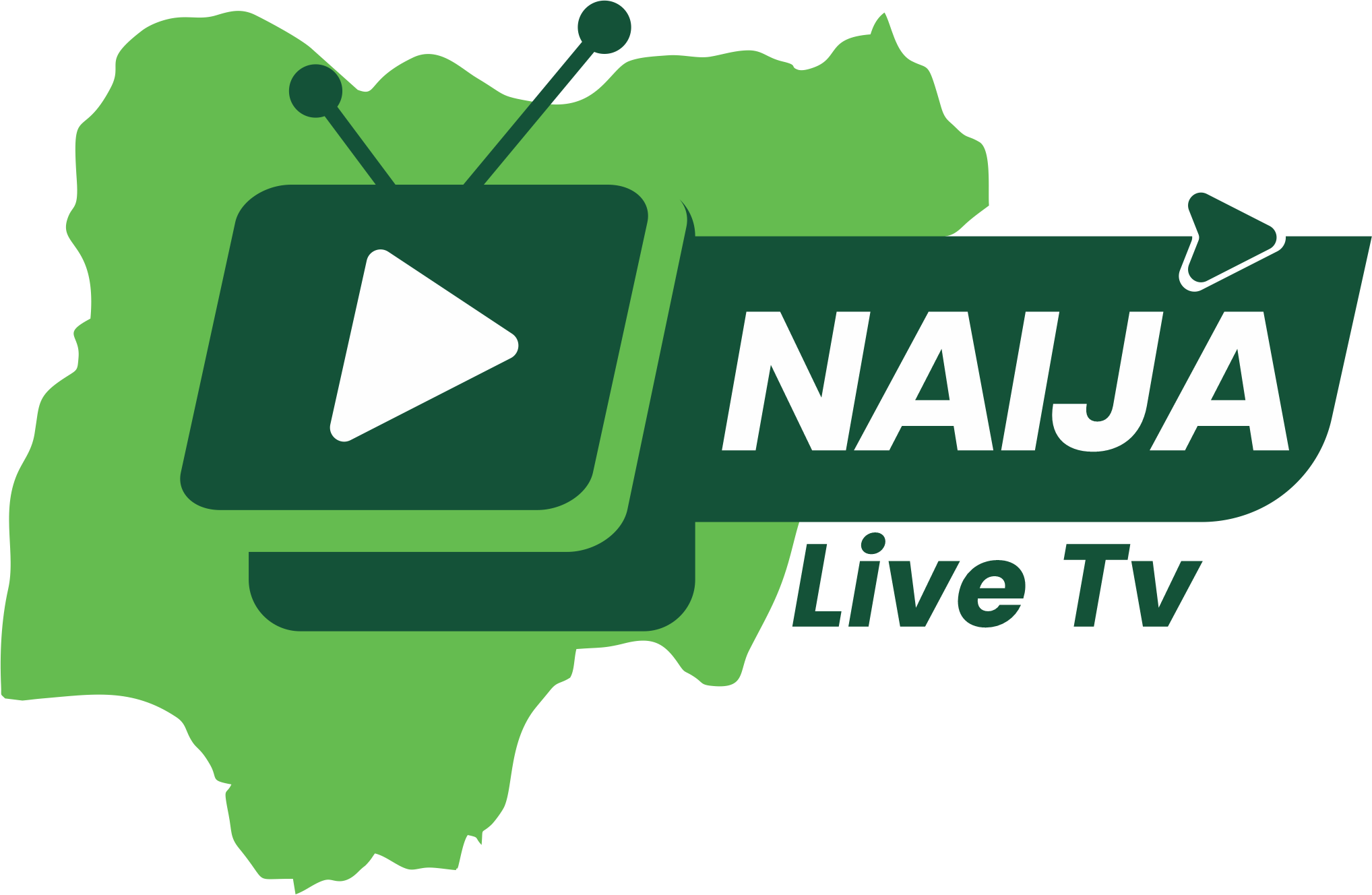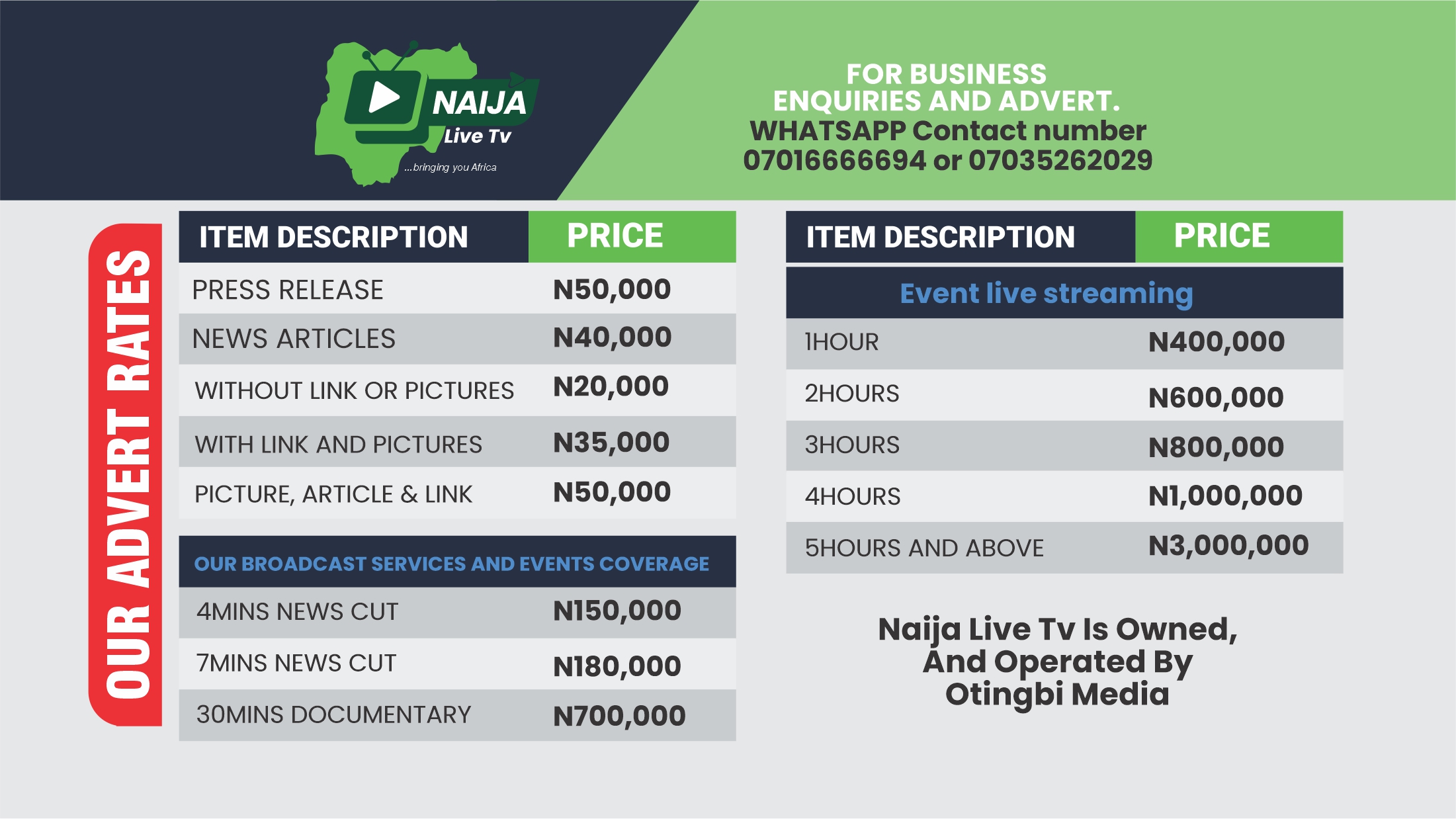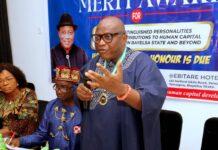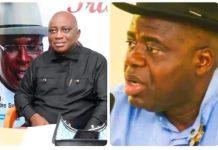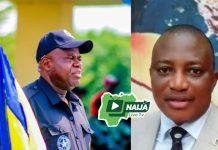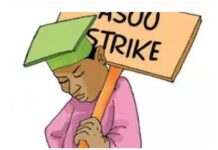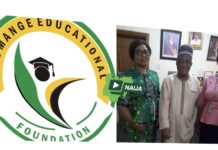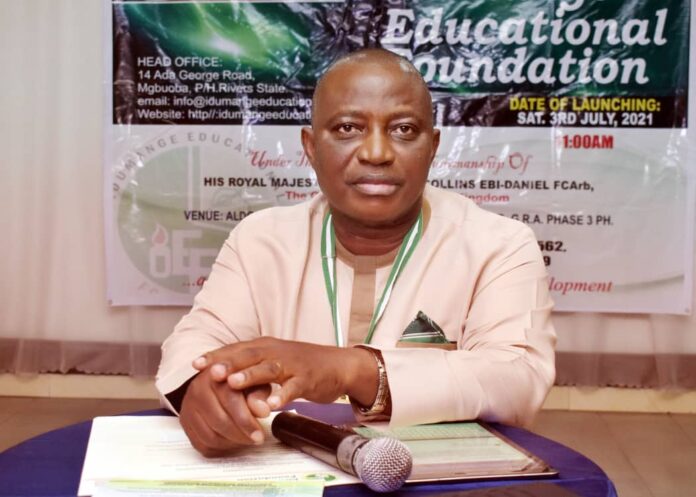
BEING A PAPER PRESENTED @ THE LAUNCHING OF THE IDUMANGE EDUCATIONAL FOUNDATION AT ALDGATE CONGRESS HOTEL, 22 SANI ABACHA ROAD GRA PHASE 3, PORT HARCOURT ON JULY 3RD 2021.
Introduction;
This is not an academic lecture. It is a frank discussion verging on what is happening in Nigeria. I have therefore taken the liberty to strip it bare of all scholarly gravity. However, the issues are thought-provoking since they impinge on our existence as a people and generations after us.
All over the world education is regarded as the bedrock of development. It is for this reason that nations around the world invest massively in education as catalyst for growth, human capital development and economic advancement. It is against this background that Article 26 of the Universal Declaration of Human Right (1948) states that:
Everyone has the right to education. Education shall be free, at least in the elementary and fundamental stages. Education shall be directed to the full development of the human personally….
The implication of this declaration is that
Everyone has the right to education
Education shall be directed to the full development of the human potentials.
Parents have a prior right to choose the kind of education that shall be given to their children
Thus basic education is important to ensure that all individuals are aware of their rights. Therefore, education allows individuals to exercise their rights. Again, all children should be offered opportunities the same opportunities to acquire education.
The United Nation International Education Fund (UNICEF) proclaims that: “All children, no matter where they live or what their circumstances, have the riight to quality education”.
In Nigeria, successive administrations have not invested in basic education and even the proclamation of free education in 1978 and the subsequent establishment of the Universal Primary Education Board, UBE has not altered the trend of Nigeria’s educational malaise.
Although In principle, Primary education is free and compulsory there is an estimated 13.5 Million children aged 5-14 years that are out-of-school. Again only 60 percent of 6-11 years olds attend primary school regularly. The situation is worse in the North. The education deprivation in Northern Nigeria as driven by various factors such as economic barriers and socio-cultural norms and practices which discourage attendance in formal education, the phenomenon of out of school children is even worse in the rural areas. In the North, 2.5 Million children are in need of education emergency support. In three complete affected states in Yobe, Borno and Adamawa, 802 School have remained closed, in the Northeast, 496 classroom have been destroyed and an estimated 1,392 classrooms have been damaged but repaired.
This paper examines the challenges of Financing Basic Education in Nigeria: Adopting the “Isono Model”. The paper X-rays the concept of Educational financing, and gives a status report on basic education in the country. The paper concludes with recommendation to improve foundational education in Nigeria.
Status Report On Basic Education In Nigeria:
Nigeria has more than 13.5 million out of school children: The highest in Sub-Saharan Africa. As at 2018, there were 13,029 public Secondary Schools in Nigeria with a student population of 5.2 Million. Nigeria has 54, 434 public Primary Schools, with a literacy rate of 86% for male and 74% for female in Urban and Peri-Urban areas. Gross enrolment of schools in Nigeria as 68.3% and children enrolled in Public elementary School is 22.4 Million.
Seventy-two percent of children who complete primary school do not attend Secondary School. Basically, whereas female enrolment has improved tremendously, it is still lower than the male counterparts. 28% of children who complete primary school make it to secondary school. A staggering 3.7 Million children do not complete primary education.
As if these statistics are not bad enough, only 86.81% of primary school entrains complete primary school – an indication that the attrition rate is high. The narrative has not changed since 2018.
The geographical spread of schools in Nigeria is as follows
Table 1:Geographical spread of basic schools in Nigeria
Zones No of schools
North-central 2, 595
North-east 2, 159
North-west 3, 065
South-east 1, 352
South-south 1, 718
South-west 2,140
Source: Federal Ministry of Education (2018)
Apart from poor funding and poor education governance culture other challenges include:
Low allocation of funds to basic education
Dearth of teaching aids and other educational inputs
Unstable curriculum and subject
Non- trained teacher
Value Erosion
Politicization of education
Corruption etc.
Table II here parades the percentage of budgetary allocation to education in Nigeria from 2012 to 2018
Year % allocation to education
2012 9.86%
2013 10.15%
2014 10.54%
2015 10.28%
2016 7.92%
2017 7.4%
2018 7.04%
Source: Expenditure on Education in Nigeria 2012 – 2018.
The poor funding of the education sector negatives the prescription by the United Nations Declaration of Human Rights that developing nations should invest at least 26% of their budgets in education. It is ridiculous that in the 2020 budget, only a patting 6.7%. The gross under-funding of the mainstream education results in the attenuation of quality and standard. The paradox now as that Nigeria which was the education laboratory of Africa has been relegated to the background (UBE Acct 2004).
Even the National policy on Education (NPE, 2014) covers that funding education should not be left in the hands of government alone. This is partly because of the educationist trend in Nigeria, which has often led to “Diploma Disease”.
This undergoes the ISONO MODEL of funding basic education which is anchored on cooperation, team work and shared responsibility.
The “Isono Model” Of Financing Basic Education
The term ISONO is derived from the Ijaw language of Nembe variant. ISONO means “Ant”. This paper will not delve into a detailed analysis of the behaviour of ant but it is essential to note that the ant mounds are built by the “Worker ants”. The worker ant is always in motion, working to eat or to build mounds or hills. Some of the hills built by the worker ants are constructed with so much solidity that even a knife cannot penetrate.
One essential characteristic of the ant kingdom is cooperation, consistency and team work. An ant colony is the basic unit around which ants organize their lifecycle. The ants have no Peter Drucker or Marx Weber but the tenets of division of labour are ingrained in their day-to-day endeavours.
If we borrow the ISONO mode of building hills, three things stand out:
- Great things can only be achieved through co-operation.
- Team work is essential in achieving set goals, and
- Division of labour is necessary to build an institution. These management principles are practiced by the ants without Peter Druker, Max Weber or Peter Senge.
The ISONO model of financing basic education is reinforced by the National Policy on Education which posits that education has become a big business that cannot be left in the hands of government alone. This model presupposes that apart from government, other stakeholders should be actively involved in the business of funding education. Such stakeholders may include but not limited to the following
Community development committees
Faith-based organizations
Corporate bodies such as Banks, the oil multinationals, etc
International agencies such as UNDP, UNICEF, UNESCO etc
Non-Governmental Organizations
Educational foundations
Philanthropists who can provide grants and salvations
Government agencies, such as UBE
The ISONO MODEL believes in shared responsibility in financing basic education to ensure the goal quality education services delivery is achieved.
(Model Developed by the Author 2021)
From the budgetary allocations to the education sector, it is obvious that Nigeria falls below the UNESCO recommended threshold of 15% to 26%. The impact of under-funding is increased drop-out rate, politicization of education, de-motivation of teachers, inadequate classrooms leading to over-crowding and dilapidated educational infrastructure, among others.
The ISONO MODEL subscribes to the view that our educational system can enjoy generous funding if we evolve a sustainable stakeholders fund sourcing and utilization model. The ISONO MODEL proposes a policy whereby all businesses, corporate bodies, non-governmental organizations, civil society groups, multinational corporations etc. shall contribute a percentage of their earnings to an educational pool, which will be dispensed by a committee where all stakeholders are represented.
With respect to the oil producing Niger Delta States, a partnership for educational development should be forged whereby 2% of the derivation fund be put together to establish an “Education Bank”. The Oil Corporations should lay emphasis on education as a basic Corporate Social Responsibility. When the mainstream education is adequately funded, all privileges associated with education such as scholarships and demonstration primary and secondary schools should be abolished.
Also Federal Government Colleges, where admission is selected should be abolished. Stakeholders should invest massively in mainstream Public education to bleach out any artificial barrier created to cause inequality in the educational system. Any programme that will give a head start to a section of children should be abolished.
Challenges of Funding Basic Education In Nigeria
It is universally acknowledged that the development of education is a reliable index to measure the level of advancement of nations. In virtually all sectors and strata of the educational enterprises, funding poses the most difficult challenge. Whereas educationists bemoan the low budgetary allocations to the education sector, even the little that is provided for is doctored by corrupt officials.
Essentially too cronyism runs faster than merit. Most people appointed to manage set their positions because they know people who are close to the corridors of power. This leads to brazen high handedness, weak administration and emasculation of education authorities/agencies saddled with the responsibility of supervision, budgeting, staff welfare and other important components of educational administration.
The phenomenon of worn out infrastructure, over-crowded classrooms and dearth of educational inputs erodes quality education. Most often, even when government approves money for education, there is a disparity between what is budgeted for in the budget and the amounts disbursed. This is where corporate governance has taken a backseat in educational administration.
So many Primary and Secondary Schools are established and located for political reasons. Across all geo-political zones in Nigeria, so basic schools only exist on paper. Some schools have no students; no teachers and no semblance of educational activity, yet fictitious names are included to attract funds. This evil is usually perpetrated by the top echelon of the bureaucracy in government Ministries and parastatals, (Asomugha, 2014).
Experience over the years has shown that monies received by the State UBE boards do not trickle down to the Local Government Education Authorities. The most buffeting is the lack of financial autonomy of the Local Councils. Funds earmarked for the payment of teachers, provision of educational inputs and students’ welfare are often misapplied. The scenario is worse in far-flung rural Communities. A 2018 report by Educeleb.com showed that 24 states failed to access the Federal basic education funds in 2017 (UBEC, 2018).
The massive corruption in the Universal Basic Education Board is a hydra-headed problem. Monies earmarked for school rehabilitation and provision of desks and chairs are sometimes misappropriated. In Abia State, under the Governor Theodore Orji there was massive corruption, which led to the replacement of the State’s 17 Local Government Councils Chairmen, (Vanguard: Dec 28, 2013)
As Nigeria strives to achieve Goal 4 of the Sustainable Development Goals, we still have cases of out-of-school children. This has been exacerbated by the economic downturn occasioned by the devaluation of the naira and other hurtful economic policies.
Since the turn of the 1980’s the economic fortunes of the nation had started to dwindle, thus putting behind the halcyon days of robust funding for foundational education. Since the Second Republic Nigeria could not adhere to the prescriptions that developing countries should commit at least 26% of their budgetary allocation to education. The situation became unpredictable following several military interregna, corruption of political elite and the top echelon of the bureaucracy (Staufer; 2020).
Conclusion and Recommendations
Basic education is a right in al democratic nations and Nigeria is no exception. It is free, universal and compulsory for all citizens. This position is reflected in Article 26 of the UDHR (1948). The right to education is reaffirmed in the 1960 UNESCO convention and the 1981 and 1990 African Charter on Human and People’s Rights. Goal 4 of the SDG also underscores this position.
As the educational laboratory of African, Nigeria declared free education in 1955, 1978 and 1999 as a commitment to pursue the education of her citizens to foster democracy, build national identity, promote social justice, encourage participation in decision-making and promote sustainable economic growth.
For three decades running, the basic educational system has been characterized by paucity of funds, demonization of teachers, over-crowded classrooms, lack of educational inputs and a catastrophic decline of the quality of education. What Nigeria faces today is the Nehemiah complex of the Ivory tower. In our polity, what is in vogue is a zero-sum game where the winner takes all and leaves nothing for the losers. In matters concerning allocatable values, we have classic case of “Matthew Effect”. That children are taught under leaking roofs sitting on the floor without writing desks, qualified teachers describes how low the educational system has plummeted. The most subtle way to stagnate a nation is to deny the children good education. The exponential rise of private primary and secondary schools is a testimony the Nigeria’s has lost confidence in public education.
The Way Forward.
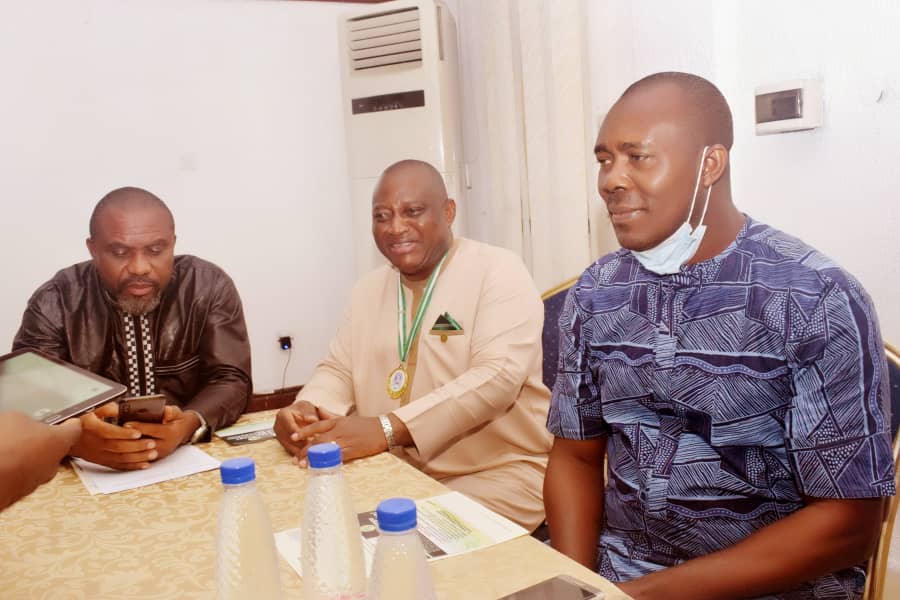
So many scholars of educational administration have suggested the need for Nigeria to increase the funding of education at least up to 15% of the natural budget. This has not been adhered to the leadership can out down on several layers of inefficiency; devote a substantial part of revenues to invest in basic education.
Specifically, the following recommendations are necessary for action.
The activities of UBE should be strictly supervised to avoid financial leakages.
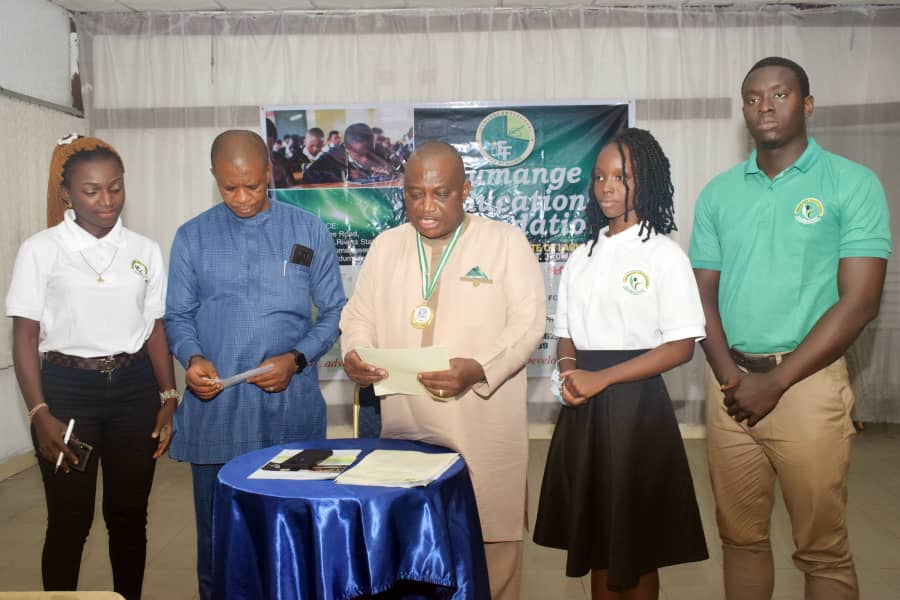
A special Education Bank should be established to tackle the problem of basic education in the nation.
A deliberate facility should be made to partner stakeholder to contribute to the financing of basic education.
Government should provide for local government authority to ensure that monthly allocations are paid directly into the accounts of local government councils.
This will prevent political leaders from hijacking allocations meant for local council.
Foundational education is like the concrete work of a building. If the building will stand the torments of bad weather, the foundation must be strong. Not funding basic education is akin to condemning a whole generation of youths to perdition.
REFERENCES
Asomugha C (2014) “Public Education is the Responsibility of government. The Vanguard Newspaper online.
A Human Rights – Based Approach to Education for All. UNESCO/UNICEF, 2007.
African charter on the Right And welfare of the child African Union.
Federal Government of Nigeria (2014) National Policy on Education. Abuja. Federal Ministry of Education.
Staufer, Brain (2020). With Millions out of school, the countdown Begins to let children into Quality, Accessible Education.
Universal Declaration of Human Rights (1948)
United Nations Treaty collections (2021)
United Nations (2009) Right to Education – What is it? Primmer on the right to education
Bisi, D.f (2006) “Underfunding of Education. The Punch. January 10, p.49
Jones – Esan. I (2009) Public/Private Partnership in funding Education in Nigeria. National Scholar 6 (1). 9-12
Idumange J. A. (2007) Alternative modes of Funding Education in Nigeria. Nigeria found of Research and production Vol 11.2. Nov. 2007
Non. Nwadiani (1999) financing Education in Sub. Saharan Africa Longman Press
Kindly contact us @ Naijalivetv@gmail.com
Call or Whatsapp: 07035262029, 07016666694, 08129340000
